it's really too bad this game sucks.
Too Human Review Rewind
|
|
See PixlBit's Review Policies

On 05/06/2013 at 03:19 PM by Julian Titus Kneel before Cyberpunk Odin! |

A solid action/RPG that will appeal to gamers looking for something to satisfy that loot lust, but falls short of being anything truly special.
In this age of long preview cycles and aggressive PR and marketing campaigns, it can be easy for the video game hype train to go so fast that it flies off the rails. The bigger the game, the bigger the hype, and few titles can ever hope to live up to it. Too Human was a game built on over ten years of increasing hyperbole, and when the game was finally released in 2008 the backlash from gamers and games writers far outpaced the merits of the actual finished product. I’d much rather evaluate games based on their actual strengths and weaknesses as opposed to what they were expected to do, and getting far enough removed from the initial hype allows for that. No, Too Human couldn’t live up to its lofty promises, but it’s also not the atrocity that some people painted it to be.
The elevator pitch for Too Human sounds like a recipe for success. Take Norse mythology - criminally underutilized in fiction - and turn it into a cyberpunk sci-fi epic with heavy RPG elements. The fact that Silicon Knights comes so close to realizing that vision only makes the shortcomings of the game all the more frustrating. Nearly every positive aspect of the game design is balanced out by a negative - and often maddening - misstep.
Modeled after dungeon crawlers like Diablo, Too Human attempts to create a simple yet elegant combat system. You need only to flick the right analog stick towards your foes to send Baldur lunging into the fray. Clearly an homage to “right-clicking” on enemies to strike them down, the combat can turn into an enjoyable and graceful dance of death…when it works.
It can be difficult to judge exactly how far across the screen Baldur can “slide” from enemy to enemy. Combat is heavily reliant on getting combo numbers up, as this fuels most of Baldur’s admittedly few special attacks. When Baldur loses momentum it feels like the game grinds to a halt for a split second, which happens often enough to become an annoyance. Putting the primary attack on the right analog stick also means that there’s no room for manual camera controls, and though the cinematic camera angles usually keep up it’s not uncommon to get into some bad situations. It can become very frustrating to deal with larger enemies or big groups when backed into a corner or when the camera gets hung up on some level geometry.
Players can choose one of five classes for Baldur, and each class has three limited tech trees to further spec the character out. These tech trees tend to favor a player’s preference for melee or ranged weapons. Although each class is capable of using both melee weapons and guns, they feel different enough from each other to make multiple playthroughs and multiplayer sessions feel unique. The melee heavy Berzerker handles a lot differently than the gun-centric Commando, for example. There’s also a choice to be made between being all human or part cybernetic, but this is a very shallow decision that simply alters a secondary skill tree that you’ll likely not realize even exists for a large portion of the game.
The sheer lack of abilities and options available to any of the five classes is really where the mechanical end of the game falls short. Besides the normal combat moves of launchers, juggles, and range attacks, Baldur just doesn’t have much in his arsenal. No matter what class you choose and what tech tree you commit to, the abilities earned are functionally similar, with only slight variations on their effectiveness in battle. The most useful move is the Spider Drone - basically a deployable turret with a lengthy cooldown timer. The other big attack comes in the form of Ruiners which allow for area of effect moves, but these are tied into the combo meter, so if that grinds to a halt (or Baldur dies) this move isn’t very useful.
The biggest sin in Too Human’s design would have to be the lack of a proper healing ability. Even the Bio Engineer (the healing class) only has the ability to occasionally use a health regeneration move that slowly regains hit points over time for himself and a second player, if multiplayer is your thing. It’s not very useful, as enemies swarm so quickly that only a mass heal would be effective. Health orbs drop from enemies at a decent clip, but all too often Baldur will be in situations where he’s at death’s door with no way to regain health. This means he’s doomed to suffer a lengthy death animation as the Valkyrie takes him away and sets him about three rooms back. It’s easily the most frustrating part of the game and anyone who plays this title will quickly grow tired of this overlong death penalty.
Too Human came out in that early time when the Unreal Engine 3 still had its growing pains and while Silicon Knights claims that they created a new engine for this game it shares many of the same graphical issues. Texture pop in is frequent, as is a stuttering framerate during cutscenes. Similarly, characters aren’t exactly coming to life due to their somewhat low polygon count. Some great art design masks a large portion of the rough-around-the-edges character models, though. The architecture of grand places like the Hall of the Aesir and the realm of the world serpent, Jormungandr is suitably vast and impressive. The environments and character design really hit the concept of cyberpunk Norse mythology home, and the loads of armor sets Baldur can acquire look regal and imposing.
The most impressive areas of the game occur whenever Baldur enters Yggdrasil, the World Tree - represented here as the online network of the Aesir. While we tend to imagine the world inside our computers as a hyper futuristic and sleek realm (see Tron), the Aesir’s internet domain is depicted as a lush and vibrant garden. The World Tree is also where some of the most inspired gameplay of Too Human takes place; affecting the environment in these virtual spaces creates actual change in the real world, leading to some clever puzzles and secrets.
Too Human was billed as an epic trilogy with a deep and thoughtful story, where the fateful choice between keeping Baldur’s humanity or letting him become a cybernetic powerhouse would have repercussions throughout the narrative. Instead, Too Human feels like an opening chapter in what might have been an engrossing novel. The depictions of well-known Norse gods such as Thor and Heimdal show some real imagination, and the story of this first game takes some interesting turns, but the best story bits don’t come around until the end of the disappointingly short campaign. This really added to my frustration when the game was new, as it wasn’t the Norse epic I had been led to believe it would be. However, if you approach the game without any of that baggage, the story is just a minor part of a flawed but enjoyable adventure.
The biggest crime of Too Human is the fact that it presents multiple great ideas that never coalesce into a cohesive game. Flashes of brilliance—from the cyberpunk setting to the generous loot system and fast-paced combat—make the problems of the game all the more noticeable. Once I got over my initial disappointment that Too Human wasn’t what I was expecting I was able to enjoy the game for what it is: a loot-based action/RPG that’s mechanically lacking in spots, but engaging enough to provide a satisfying adventure. It’s over too soon, and the fact that it teases a sequel that will never happen certainly rankles, but it’s a game worth trying out if you can enjoy games despite their shortcomings.
Note: You can listen to members of the PixlBit staff talk about Too Human in detail on Backloggers Anonymous.


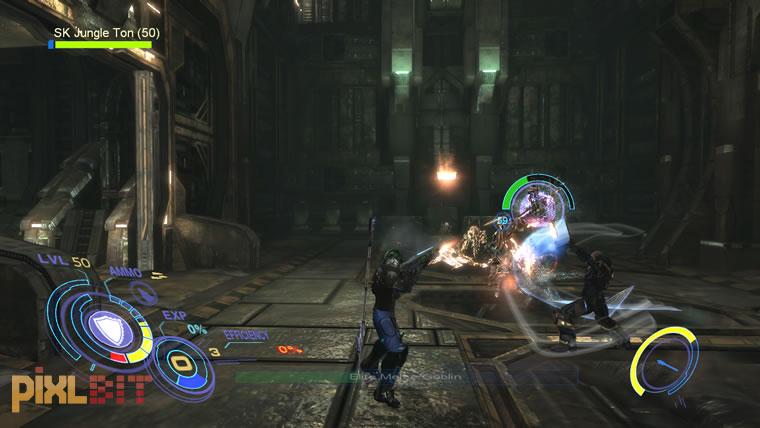
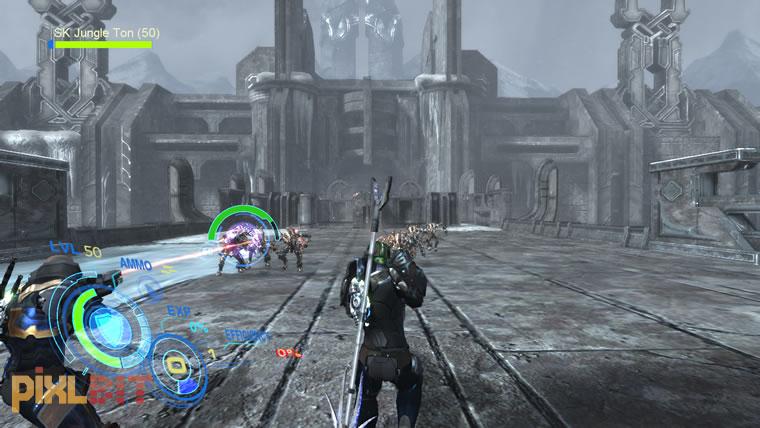
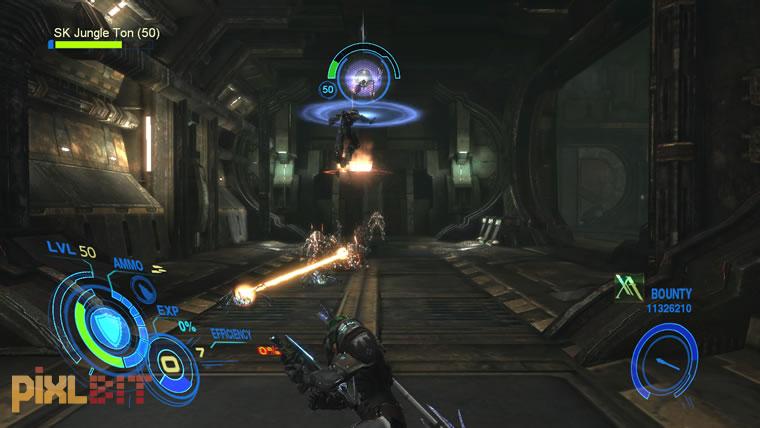
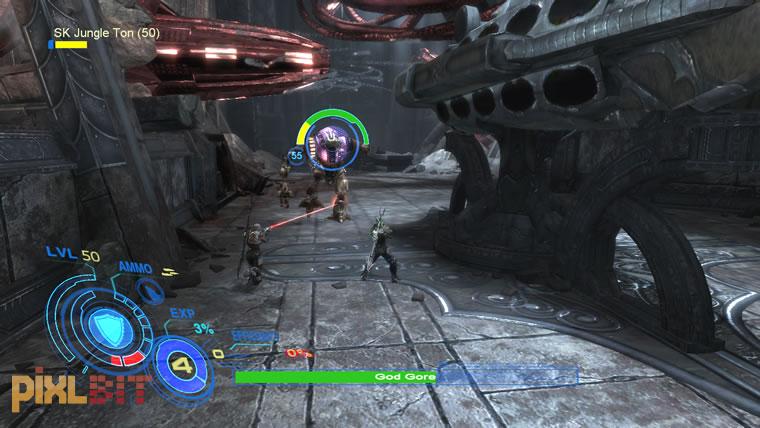





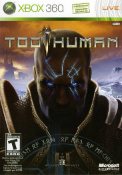


Comments